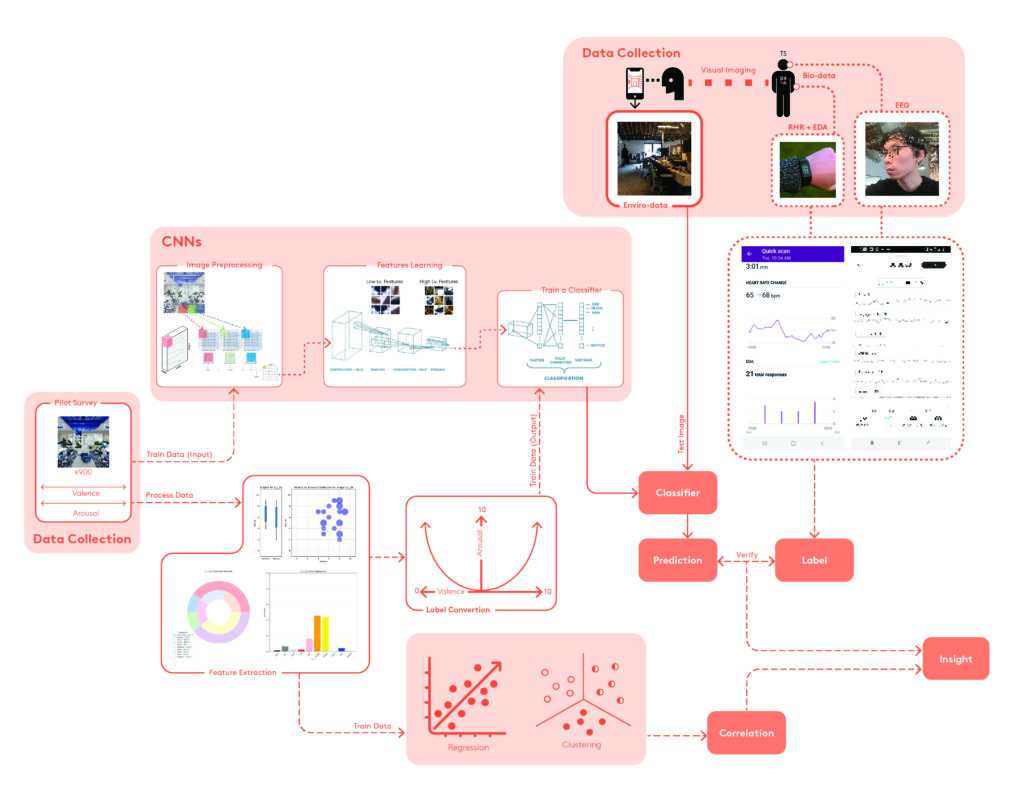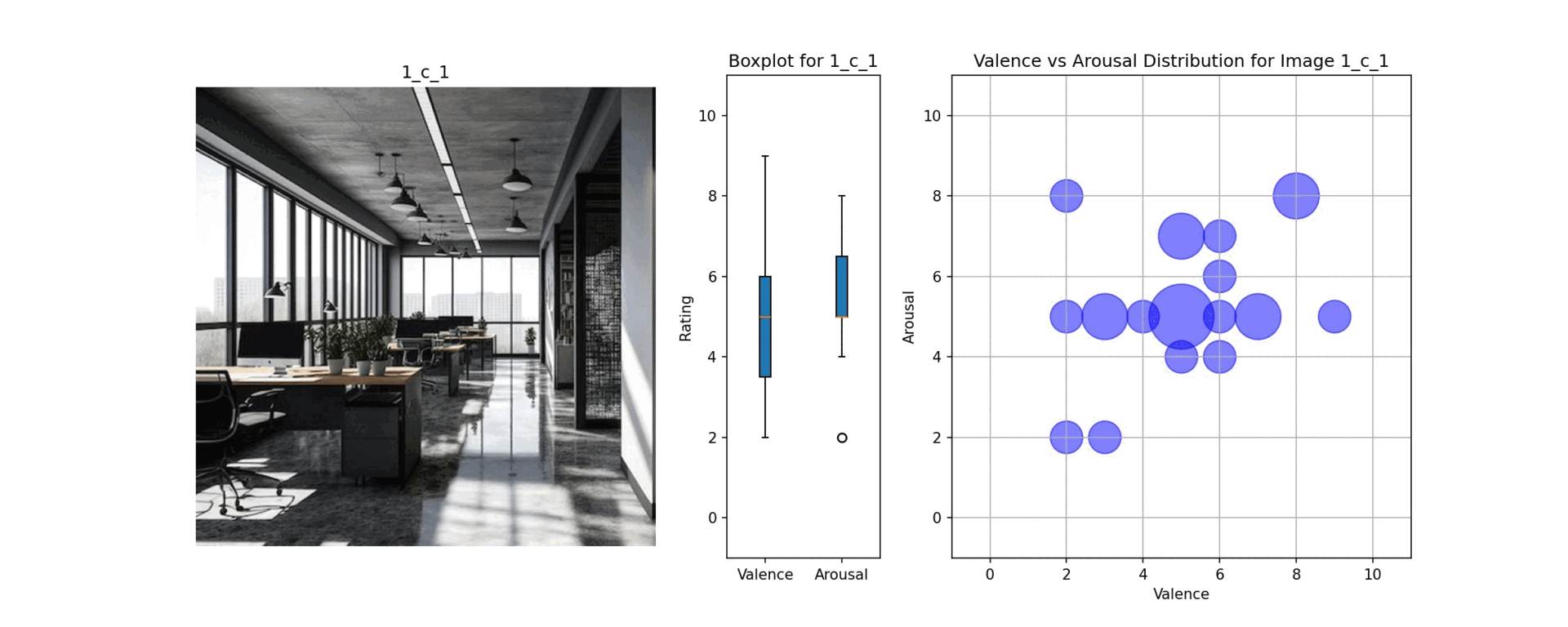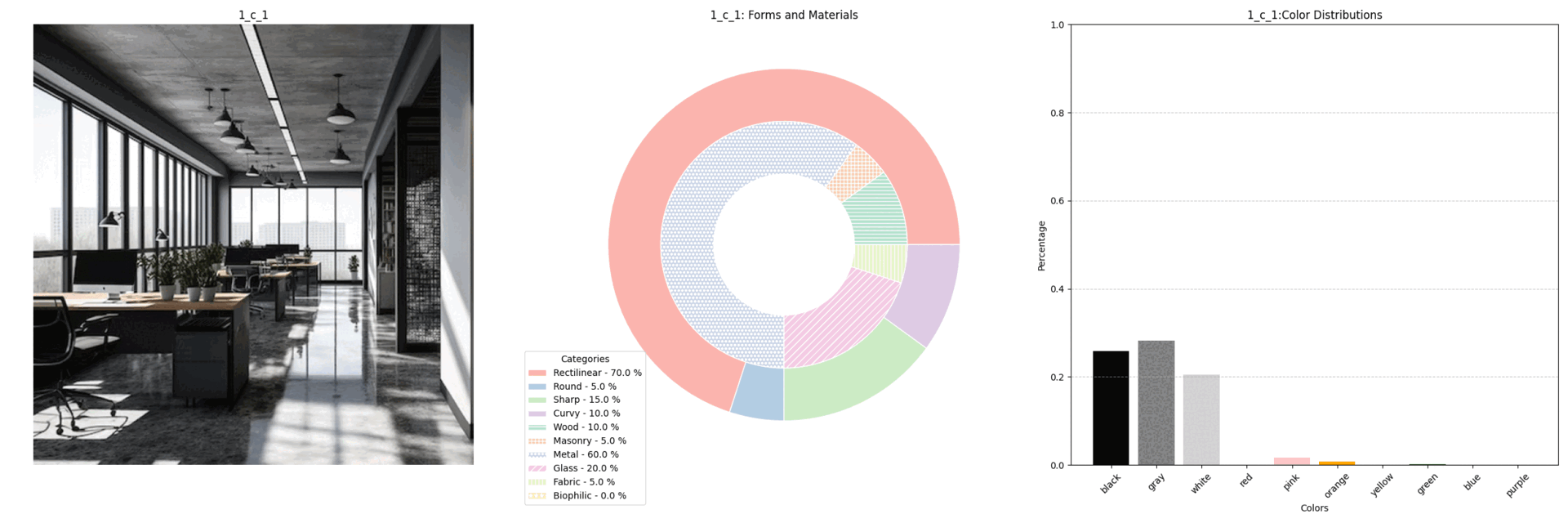August 12, 2024
Evaluating Workplace Wellbeing: A Framework Using Biometric Data and Neural Networks
ARC Fellow: Ka Kit Chiu
Degree Program: MS Arch, Design Technology
Faculty Advisors: Narjes Abbasabadi (Architecture)
Firm: Mithun
Firm Advisors: Jason Steiner, Katie Stege
Project dates: Autumn 2023 – Spring 2024
Read the Project Report
Watch the Presentation
View the Presentation Slides
More about the project:
The post-pandemic work landscape demands a paradigm shift in workplace design, prioritizing both employee wellbeing and rejuvenation. While a substantial number of remote working Americans are refusing to return to the office, studies show that hybrid or remote workers experience a higher rate of mental health issues due to constant interruptions at work. Therefore, the role of a dedicated workplace becomes more crucial, as it provides a designated space to focus and supports a work-life boundary essential for both physical and mental health. This paper posits that effective workplace design, particularly through visual elements such as spatial forms, materials, and colors, can improve physiological and psychological responses. These design elements influence the long-term well-being through sensory stimulations and by shaping perceptions of space. Although standards such as the WELL standard and LBC 4.0 provide design guidelines that promote health, they fall short in quantitatively demonstrating their impact on occupants’ wellbeing, as well as being diluted by broader issues such as environmental sustainability and building performance. Addressing this gap, our research aims to develop a framework using convolutional neural networks (CNNs) trained on images of interior environments, as well as human valence and arousal responses. This model will test against the evaluation based on electroencephalogram (EEG), electrodermal activities (EDA), and resting heart rate (RHR) to quantitatively evaluate how visual design elements influence employee well-being. This approach promises to inform more effective workplace design that not only meets operational and performance needs but also promotes employee well-being and facilitates rejuvenation.

Methodology: Framework of CNNs model development. KA KIT CHIU

Valence and Arousal Responses. KA KIT CHIU

Architectural features analysis of interior environment. KA KIT CHIU
